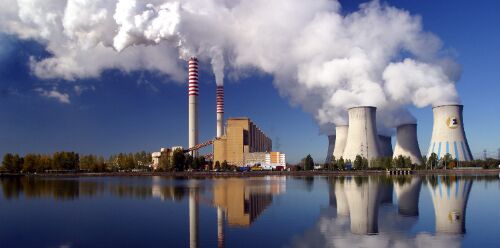An old habit

Recently, in an exclusive report, Reuters revealed that India may likely build new coal-fired power plants as they still generate the cheapest energy. Coming at a time when climate change has become a major agenda on the world stage, this apparent revelation may be considered unfortunate but is not altogether surprising. The 28 page draft of the National Electricity Policy (NEP 2021) viewed by Reuters acknowledged that even as India reaches for non-fossil fuel alternatives, coal-based generation capacity will still be required due to how cheap it is. The document calls for these new plants to use 'more efficient technologies' to keep the impact at a bare minimum. It should also be noted that the use of coal-fired power plants has actually been on the decline for some time as India's share of renewable energy sources steadily goes. Nevertheless, the possibility of new coal-power plants being presented as part of NEP 2021 is telling. NEP 2021 is supposed to be the first significant attempt since 2005 for the country to formulate an electricity policy. In the intervening years, India has taken to renewable energy in a big way. In India, solar power went from a government subsidised and promoted pet-project to a viable source of energy on a mass scale which is slowly becoming competitive against coal-fired power. At a certain point, investing in massive solar farms became a far more viable prospect than opening up more and more coal-fired plants. India is actually planning an ambitious 100 GW in renewable energy from solar power by 2022. Indeed, India's increasing use of solar power as a viable alternative to current energy production methods has fast become the centre of the nation's climate change commitments. By some estimates, India could become the fourth largest market for renewable energy by 2030, right after China, the US and the EU. In addition, the newly formed International Solar Alliance has given India a powerful potential tool for diplomacy as well. Headquartered in Gurugram, the treaty-based inter-governmental organisation currently has 124 countries as its member. Given all this, it is understandable why India is using solar power and renewables in general as the basis of its climate change mitigation credentials. The international community is presently charged with an urgency to address climate change that was largely missing in the time before the pandemic. The possibility of successful climate change diplomacy and the US taking up a leadership role to promote the climate change agenda has done much to reinvigorate efforts. At such a time when public demand and international pressures are pushing world governments to do more, India has been praised by many for its climate change agenda and the speed of its renewable energy switch. But there are some caveats to this switch that make getting rid of non-renewables complicated. First, many experts worry that switching away from traditional coal-powered plants is a sure-shot way of introducing instabilities in the power grid. Thus, NEP 2021 seems keen on retaining and perhaps even adding new coal-fired and natural gas-fired power plants to ensure greater flexibility for India's power production even as the renewable switch is slowly implemented. There is also a real problem of supply chains when it comes, particularly in the case of solar power. While solar power infrastructure and technology is now more convenient and cheaper to produce, India is still fairly dependent on China for many of the raw and finished materials. Normally, this is a relatively mild concern but the pandemic proved that such dependencies can become problematic as lockdowns in solar module manufacturing cities of China had a major impact on India's efforts to transition to solar power in a big way. In the short term, this means that the necessary components for solar power are seeing major fluctuations. The way to fix the issue is to obviously promote 'Make in India' initiatives that would localise all aspects of solar power production within India, an initiative that the government is likely to invest in. There are other planned expansions of renewables as well with a major one being an increased focus on hydropower. But it is also clear that coal-power plants are going nowhere in the near future. Indeed, Fitch Solutions actually recently stated that it expects coal-fired power plants to remain a major driver of infrastructure investment in India. Fitch has forecasted the use of coal power plants to grow from 1,032 TWh in 2020 to 1,691 TWh in 2030, an expansion which Fitch notes will be the largest of any market globally over that time period. Fitch has based its assessment in part on the many favourable policies and stances the Indian government has taken in regards to the continuing development of coal-fired power plants in India. A recent example of this was when the government pushed back the deadline for coal-fired power plants to adopt the new emission norms by three years.



